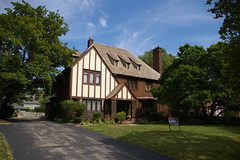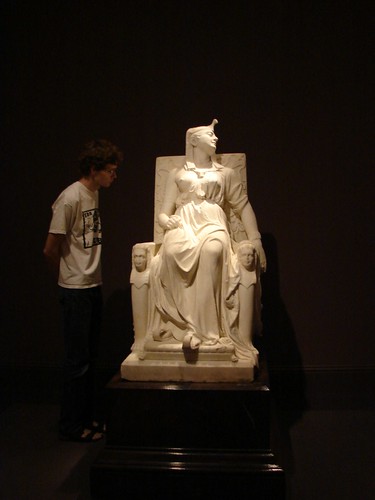Many homeowners are interested in learning the history of their house. The following will be a general description of some of the routes one can take in this research. As with many things relating to old houses, it takes a fair amount of time or money, more of one almost always making up for a lack of the other. The following resources wil be presented in the general order one might take. Keep in mind that, in many places, street names may change over time, so it may be necessary to consult additional resources to determine this.
Talk to the current owners and to the neighbors. While they may be somewhat sketchy on the exact details of the ownership of the house, they'll likely have photographs and other history not available elsewhere. Also look at the physical records attached to the heating and other mechanical systems, which will often have a name attached to them, usually with a date, which should provide some idea as to who owned the house and when.
Real estate transfers are a matter of public record. In Ohio, these records are kept at a county level, but elsewhere they may be recorded at a city level. In some places, like Cleveland, the County Recorder or equivalent will have an online database of all real estate transfers, which, in the case of Cleveland, goes back to the early 19th century. Keep in mind that the quality of the search results is entirely dependent upon the quality of the original documents, and that variants in names can make things more time consuming, for instance, someone might be John Smith in one instance and Jno. Smith in another.
If the real estate records are not available online, they can probably be search at the place of record either in person or as part of a fee-based service. This will generally require knowledge of the individual parcel number for your residence, which should be listed on the title transfer paperwork and the mortgage. This is usually very time consuming, and methods discussed below should probably be attempted first.
See if your city hall keeps building records. They may, for instance, have documentation as to when the building was built, the architect, builder, and cost. They may even have copies of the blueprints. Even if they don't have these, they may have records of building permits taken out on a property, which will help determine what work has actually been done on a residence and by whom.
Look at city directories and Criss-Cross directories, both of which list the resident or residents of a given address. A detailed ownership history might be learned by looking at these directories, year by year, and seeing who the listed residents were that year.
Fire insurance maps, sometimes called Sanborn maps after one of the major publishers of them, can sometimes provide clues as to when a structure was built and added to. Plat maps can also be useful, if available. These, as well as the directories metioned above should be available at the closest major public library.
Your local public library or historical society may have other types of information not mentioned here - before you begin researching the history of your house, it is probably adivsable to contact them and see if they might have other useful resources.
Once you have a general ownership history, start looking at local genealogical resources. Many public libraries have indices of obituaries from local newspapers. These often include the survivors of the deceased, and sometimes even their address, which helps to confirm the information that you've already located. The library may also have other resources that can help you learn about the history of an individual or family.
Ancestry.com can provide a wealth of information, but it requires a subscription - it is also available at many public libraries. When searching for a name, it really helps to limit by approximate date of birth and death, if known. The most useful records, in my research, are those relating to immigration and the WWI and WWII draft cards, which in addition to name and address will often list profession and location of business, as well as other history. Census records can also be useful, though the quality of the microfilms from which the scans were made is very hit-or-miss. Census records will list the names of all the residents of a given address, which can be useful when searching for other records - often things will come up for one name that might not come up for another, again due to the quality of the original documents.
I hope that this provides some assistance to the casual researcher. Most of all, I want to emphasize how helpful the local history department at your library can be, as they surely have resources and methods available that I have not mentioned here.
Subscribe to:
Post Comments (Atom)


1 comment:
Thank you for this information. Researching the history of my house is among the top 5 things I plan to do. I really appreciate the hints and tips for getting that information.
Post a Comment